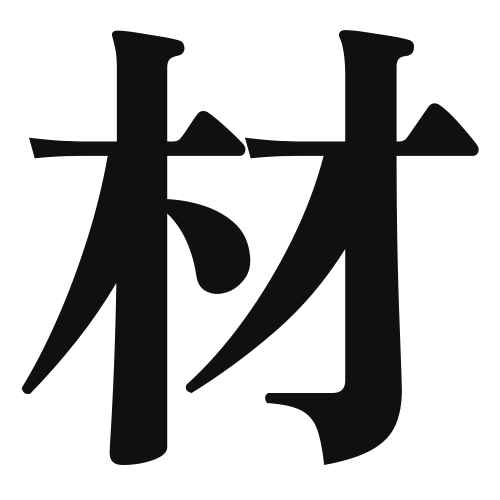1. Overview of Meaning
The kanji “材” (zai) primarily means “material” or “timber.” It refers to the substance or resources used to create something, often in the context of construction or crafting.
2. Origin and Radical
Formation of the Kanji: The kanji “材” is a compound character (会意文字) that combines elements to convey its meaning. It consists of the radical “木” (tree) which signifies wood or material, and “才” (sai), which can imply ability or talent.
Radical: The radical of “材” is “木” (tree), indicating its connection to wood and natural materials.
3. Examples of Usage
Common Words and Phrases: Some frequently used words that include “材” are:
- 材料 (ざいりょう, zairyou) – materials
- 木材 (もくざい, mokuzai) – lumber or timber
Example Sentences in Daily Conversation:
- このプロジェクトには高品質の材料が必要です。
(This project requires high-quality materials.) - 新しい家具はどの木材で作られていますか?
(What type of timber is the new furniture made from?)
4. Synonyms and Antonyms
Similar Kanji: A kanji with a similar meaning is “資” (shi), which means “resources” or “assets.” While “材” focuses on physical materials, “資” encompasses a broader range of resources, including financial and human resources.
Opposite Kanji: An antonym is “無” (mu), meaning “none” or “without.” This contrasts with “材,” which implies the presence of materials or resources.
5. Cultural and Historical Background
Connection to Japanese Culture: In Japan, the concept of “材” is deeply rooted in traditional craftsmanship, where the quality of materials is paramount in creating art and architecture.
Proverbs and Idioms: One relevant proverb is “木を見て森を見ず” (ki wo mite mori wo mizu), which translates to “Can’t see the forest for the trees.” This emphasizes the importance of understanding the bigger picture, much like how the right materials contribute to the overall success of a project.
